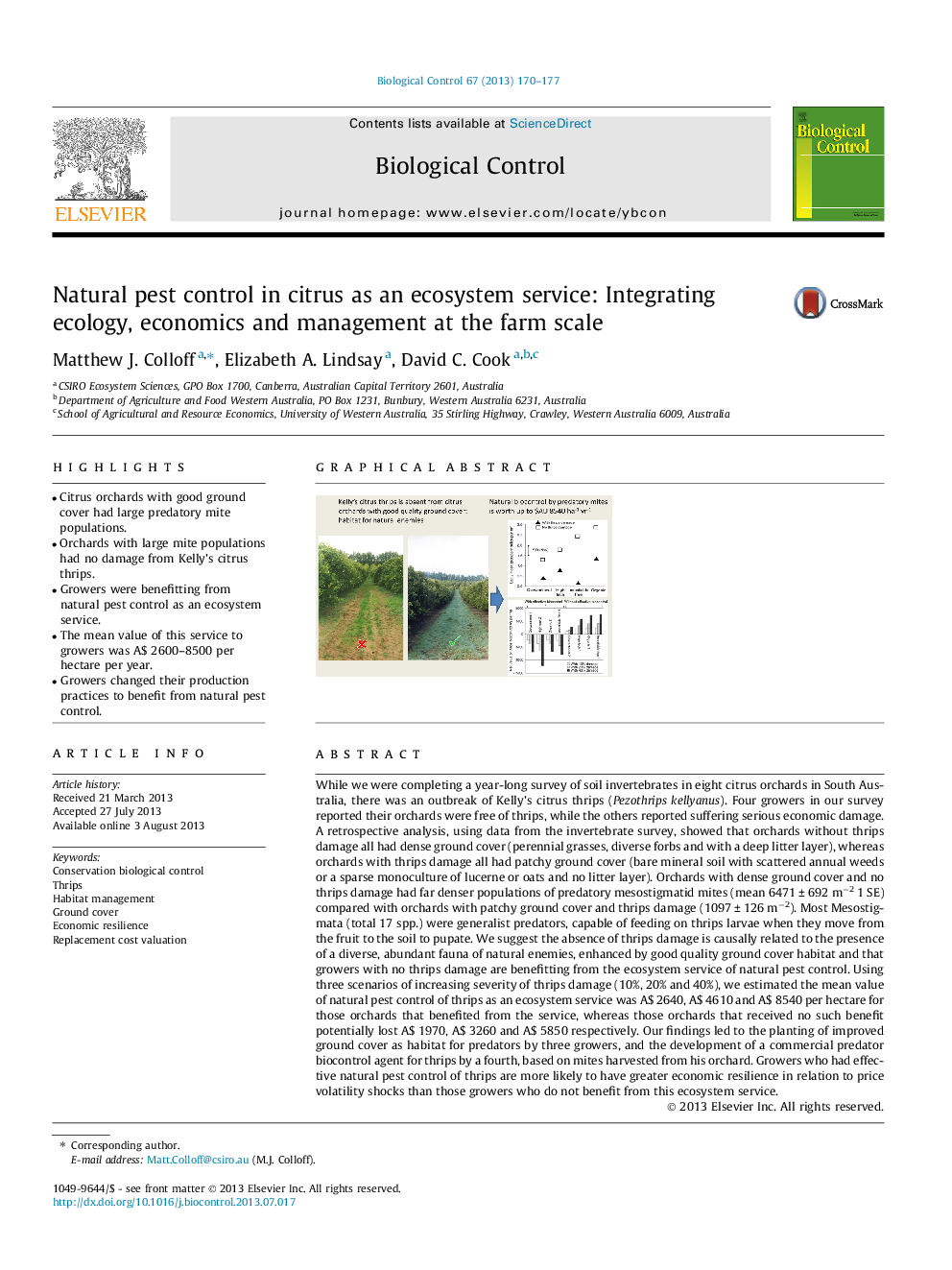| کد مقاله | کد نشریه | سال انتشار | مقاله انگلیسی | نسخه تمام متن |
|---|---|---|---|---|
| 4504048 | 1321054 | 2013 | 8 صفحه PDF | دانلود رایگان |

• Citrus orchards with good ground cover had large predatory mite populations.
• Orchards with large mite populations had no damage from Kelly’s citrus thrips.
• Growers were benefitting from natural pest control as an ecosystem service.
• The mean value of this service to growers was A$ 2600–8500 per hectare per year.
• Growers changed their production practices to benefit from natural pest control.
While we were completing a year-long survey of soil invertebrates in eight citrus orchards in South Australia, there was an outbreak of Kelly’s citrus thrips (Pezothrips kellyanus). Four growers in our survey reported their orchards were free of thrips, while the others reported suffering serious economic damage. A retrospective analysis, using data from the invertebrate survey, showed that orchards without thrips damage all had dense ground cover (perennial grasses, diverse forbs and with a deep litter layer), whereas orchards with thrips damage all had patchy ground cover (bare mineral soil with scattered annual weeds or a sparse monoculture of lucerne or oats and no litter layer). Orchards with dense ground cover and no thrips damage had far denser populations of predatory mesostigmatid mites (mean 6471 ± 692 m−2 1 SE) compared with orchards with patchy ground cover and thrips damage (1097 ± 126 m−2). Most Mesostigmata (total 17 spp.) were generalist predators, capable of feeding on thrips larvae when they move from the fruit to the soil to pupate. We suggest the absence of thrips damage is causally related to the presence of a diverse, abundant fauna of natural enemies, enhanced by good quality ground cover habitat and that growers with no thrips damage are benefitting from the ecosystem service of natural pest control. Using three scenarios of increasing severity of thrips damage (10%, 20% and 40%), we estimated the mean value of natural pest control of thrips as an ecosystem service was A$ 2640, A$ 4610 and A$ 8540 per hectare for those orchards that benefited from the service, whereas those orchards that received no such benefit potentially lost A$ 1970, A$ 3260 and A$ 5850 respectively. Our findings led to the planting of improved ground cover as habitat for predators by three growers, and the development of a commercial predator biocontrol agent for thrips by a fourth, based on mites harvested from his orchard. Growers who had effective natural pest control of thrips are more likely to have greater economic resilience in relation to price volatility shocks than those growers who do not benefit from this ecosystem service.
Figure optionsDownload as PowerPoint slide
Journal: Biological Control - Volume 67, Issue 2, November 2013, Pages 170–177